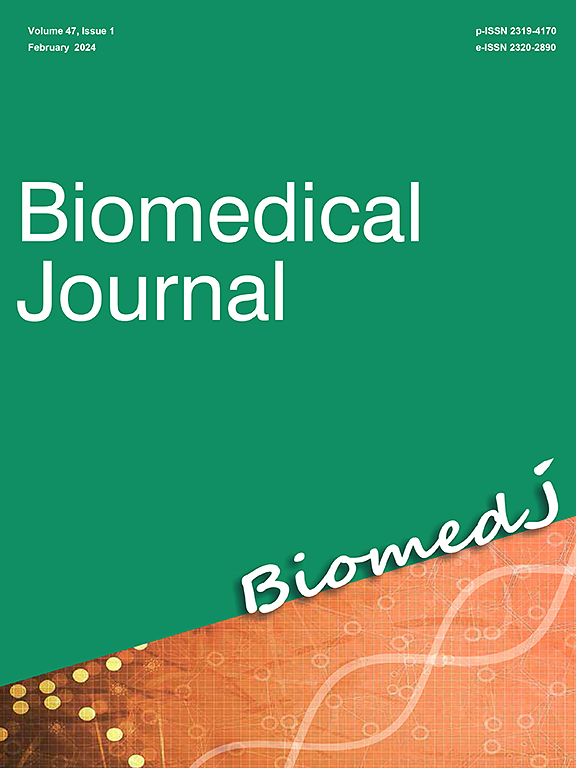Circadian disruption of feeding-fasting rhythm and its consequences for metabolic, immune, cancer, and cognitive processes
IF 4.4
3区 医学
Q2 BIOCHEMISTRY & MOLECULAR BIOLOGY
引用次数: 0
Abstract
The circadian system is composed by a central hypothalamic clock at the suprachiasmatic nuclei (SCN) that communicates with peripheral circadian oscillators for daily coordination of behavior and physiology. The SCN entrain to the environmental 24-h light-dark (LD) cycle and drive daily rhythms of internal synchronizers such as core body temperature, hypothalamic-hypophysary hormones, sympathetic/parasympathetic activity, as well as behavioral and feeding-fasting rhythms, which supply signals setting core molecular clocks at central and peripheral tissues. Steady phase relationships between the SCN and peripheral oscillators keep homeostatic processes such as microbiota/microbiome composition/activity, metabolic supply/demand, energy balance, immunoinflammatory process, sleep amount and quality, psychophysiological stress, etc. Indeed, the risk of health alterations increase when these phase relationships are chronically changed prompting circadian disruption (CD), as occurring after sudden LD cycle changes (so-called jet-lag), or due to changes of activity/feeding-rest/fasting rhythm with respect to LD cycles (as humans subjected to nightwork, or restricting food access at rest in mice). Typical pathologies observed in animal models of CD and epidemiological studies include metabolic syndrome, type-2 diabetes, obesity, chronic inflammation, cancer, sleep disruption, decrease in physical and cognitive performance, and mood, among others. The present review discusses different aspects of such physiological dysregulations observed in animal models of CD having altered feeding-fasting rhythms, with potential translation to human health.
进食-禁食节律的昼夜节律中断及其对代谢、免疫、癌症和认知过程的影响。
昼夜节律系统由位于视交叉上核(SCN)的下丘脑中央时钟组成,该时钟与周围昼夜节律振荡器通信,以协调日常行为和生理。SCN参与环境的24小时光暗(LD)周期,并驱动内部同步器的日常节律,如核心体温、下丘脑-垂体激素、交感/副交感神经活动,以及行为和进食-禁食节律,这些节律提供信号,设置中央和外周组织的核心分子钟。SCN与外周振荡器之间的稳定相位关系保持了微生物群/微生物组组成/活性、代谢供需、能量平衡、免疫炎症过程、睡眠量和质量、心理生理应激等稳态过程。事实上,当这些阶段关系长期改变,导致昼夜节律中断(CD)时,健康改变的风险增加,如在LD周期突然变化(所谓的时差)之后发生的,或由于活动/喂养-休息/禁食节奏与LD周期的变化(如人类受到夜间工作,或小鼠在休息时限制食物获取)。在动物模型和流行病学研究中观察到的典型病理包括代谢综合征、2型糖尿病、肥胖、慢性炎症、癌症、睡眠中断、身体和认知能力下降以及情绪等。本综述讨论了在乳糜泻动物模型中观察到的这种生理失调的不同方面,这些失调改变了摄食-禁食节律,并可能转化为人类健康。
本文章由计算机程序翻译,如有差异,请以英文原文为准。
求助全文
约1分钟内获得全文
求助全文
来源期刊

Biomedical Journal
Medicine-General Medicine
CiteScore
11.60
自引率
1.80%
发文量
128
审稿时长
42 days
期刊介绍:
Biomedical Journal publishes 6 peer-reviewed issues per year in all fields of clinical and biomedical sciences for an internationally diverse authorship. Unlike most open access journals, which are free to readers but not authors, Biomedical Journal does not charge for subscription, submission, processing or publication of manuscripts, nor for color reproduction of photographs.
Clinical studies, accounts of clinical trials, biomarker studies, and characterization of human pathogens are within the scope of the journal, as well as basic studies in model species such as Escherichia coli, Caenorhabditis elegans, Drosophila melanogaster, and Mus musculus revealing the function of molecules, cells, and tissues relevant for human health. However, articles on other species can be published if they contribute to our understanding of basic mechanisms of biology.
A highly-cited international editorial board assures timely publication of manuscripts. Reviews on recent progress in biomedical sciences are commissioned by the editors.
 求助内容:
求助内容: 应助结果提醒方式:
应助结果提醒方式:


